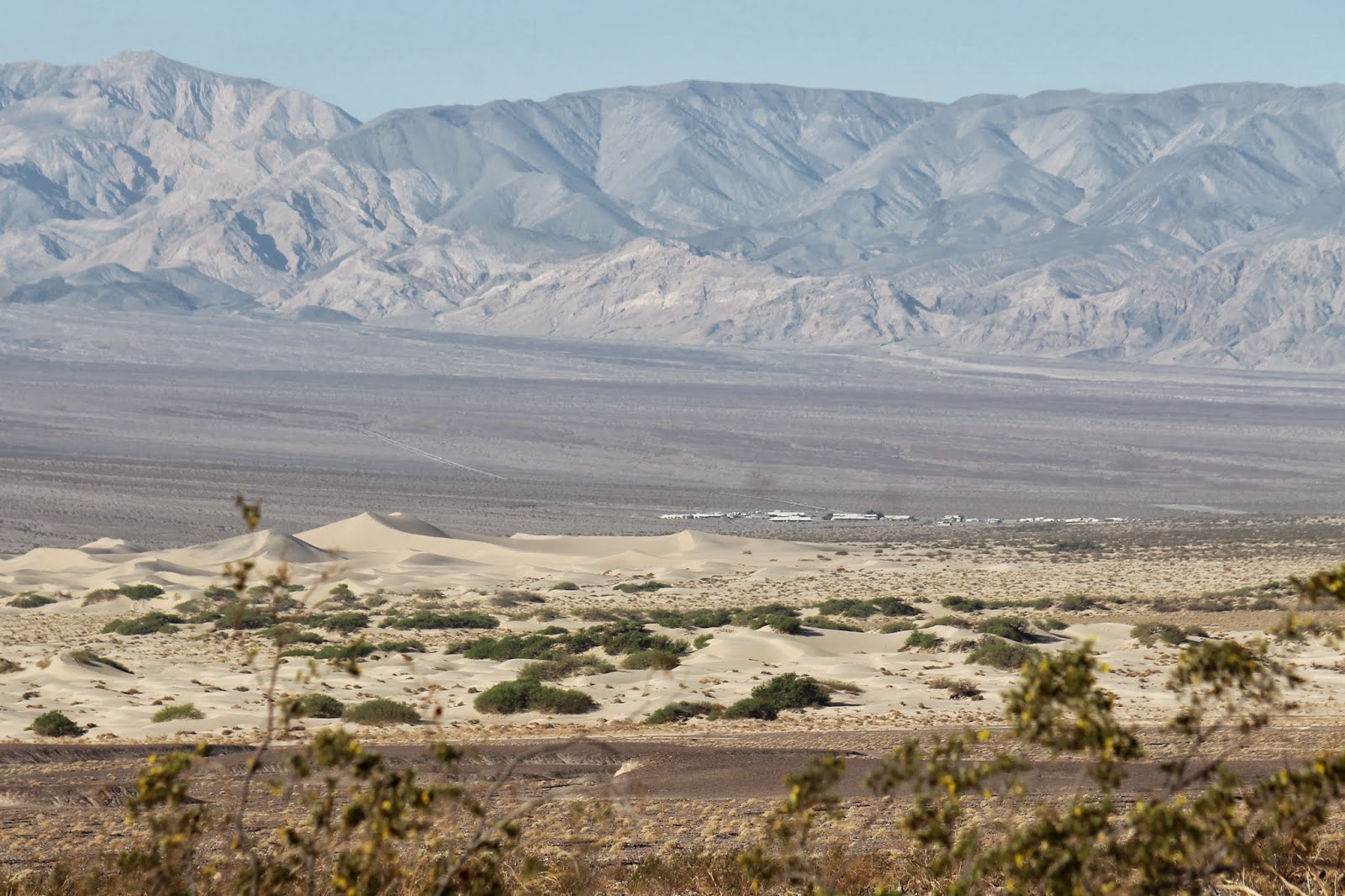 |
| If you look closely, you can see a couple hikers on their way to the floor of the crater |
 |
| Little Ubehebe Crater nearby |
 |
| The start of the road to the Racetrack dry lake, 23 grueling miles away |
"...I decided to visit California for a year or two to see its wonderful flora and the famous Yosemite Valley. All the world was before me and every day was a holiday, so it did not seem important to which one of the world's wildernesses I first should wander." --John Muir (1868)
 |
| If you look closely, you can see a couple hikers on their way to the floor of the crater |
 |
| Little Ubehebe Crater nearby |
 |
| The start of the road to the Racetrack dry lake, 23 grueling miles away |
 |
| Our campsite at Mesquite Spring overlooking a wash |
 |
| Approaching the Red Cathedral |
 |
| End of the trail |
 |
| Looking back out of the canyon |
 |
| Looking back from Red Pass at part of the road we have traveled |
 |
| Typical terrain around Red Pass |
 |
| Approaching Titus Canyon |
 |
| Finally, the canyon opens up into the floor of Death Valley |
 |
| The red arrow points to a "Sea Level" sign up on the cliff |
 |
| Walking on the salt flats at Badwater |
 |
| It really is salt...I tasted it |
 |
| In the foreground you can see where people have trampled the salt crystals, beyond is the un-trampled salt flats that go on for miles |
 |
| The salt forms intricate crystals |
 |
| In this area, the salt forms a jagged surface that is almost impossible to walk on, colorfully called The Devil's Golfcourse for the tourists ;-) |
 |
| Lynnae navigating Mosaic canyon |
 |
| Natural bridge down one of the canyons |
 |
| Rhyolite was founded in 1904 and became a boomtown with thousands of residents and two banks. This is one of the bank buildings. |
 |
| Rhyolite general store |
 |
| Mill for processing gold ore at the Eureka mine. This mine operated until 1945 and produced an estimated $175,000 worth of gold (at $20 per oz. at the time) for the man who owned it. Ironically he lived his whole life in a place where there was nowhere to spend his wealth! |
 |
| Eureka mine entrance |

 |
| We stayed at the settlement you see in the middle of this picture--Stovepipe Wells, founded in 1926. The owner built his own toll road into the valley for tourists. |
 |
| Rangers in 30's period costumes give tours of the site |
 |
| The interior was decorated in Spanish style with no real concern for cost. Before the Depression, the owners' income was over $1 million per year. |